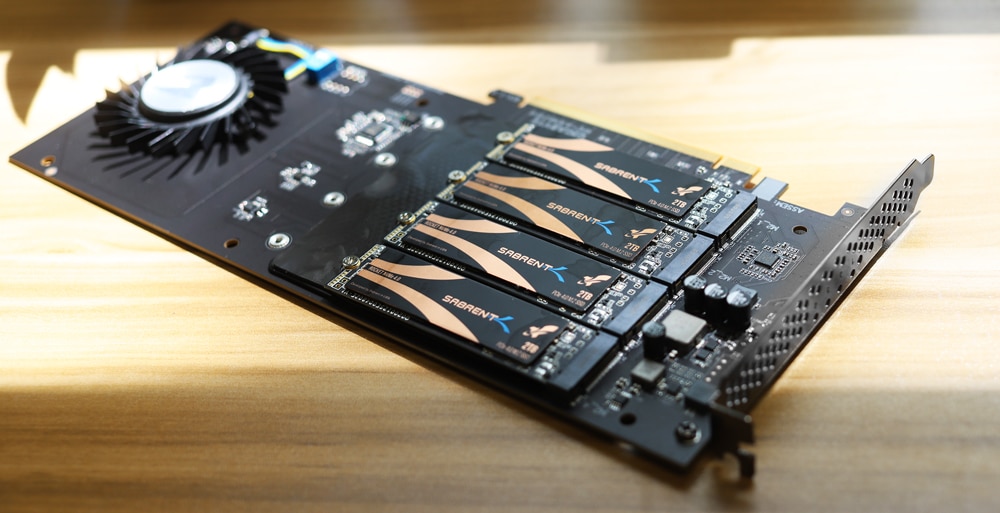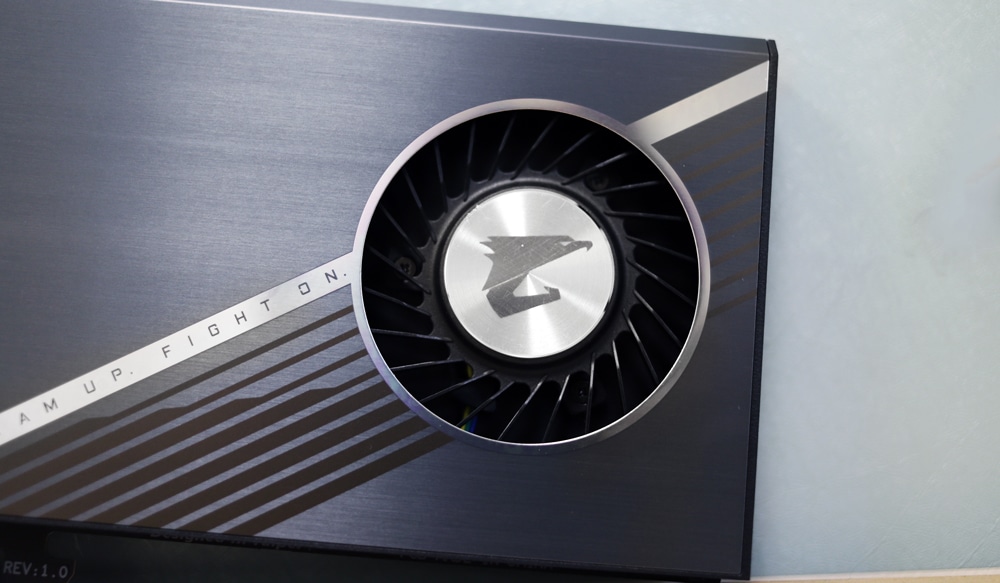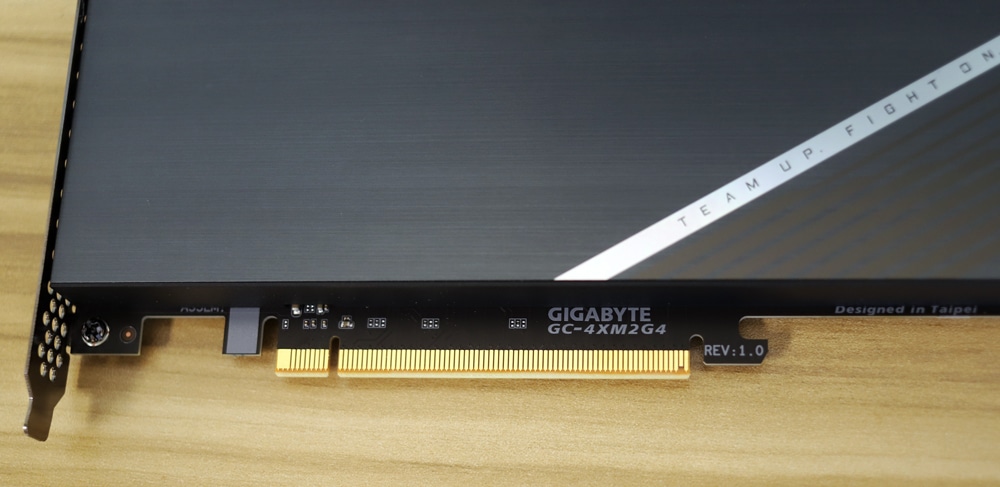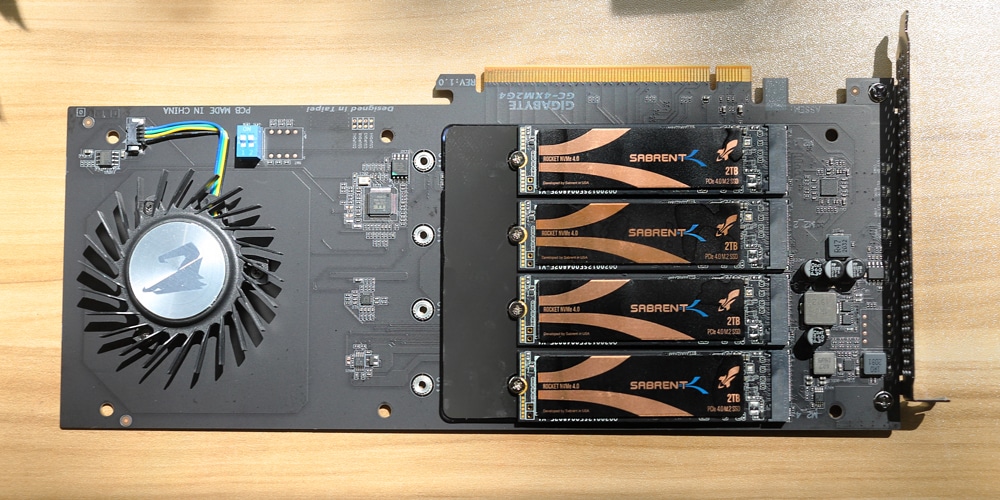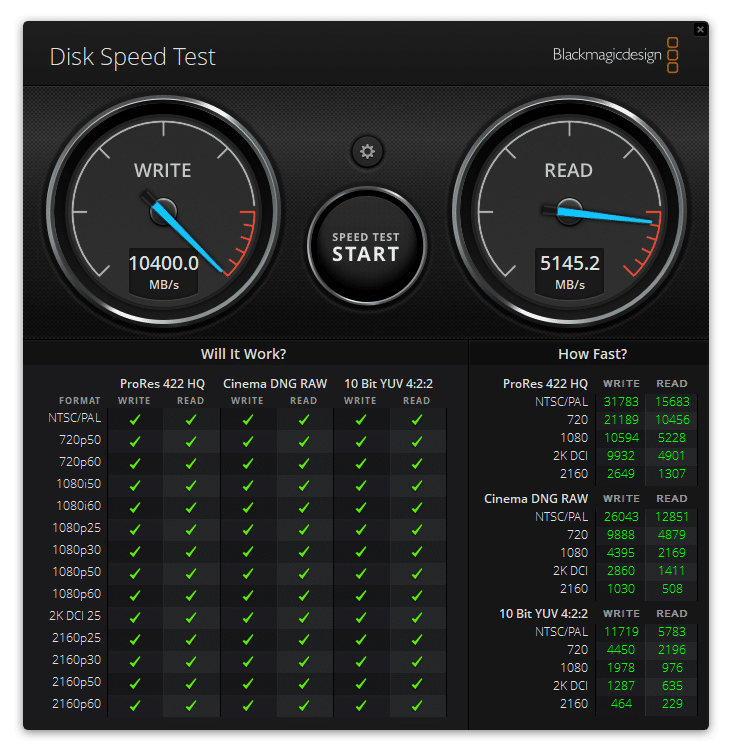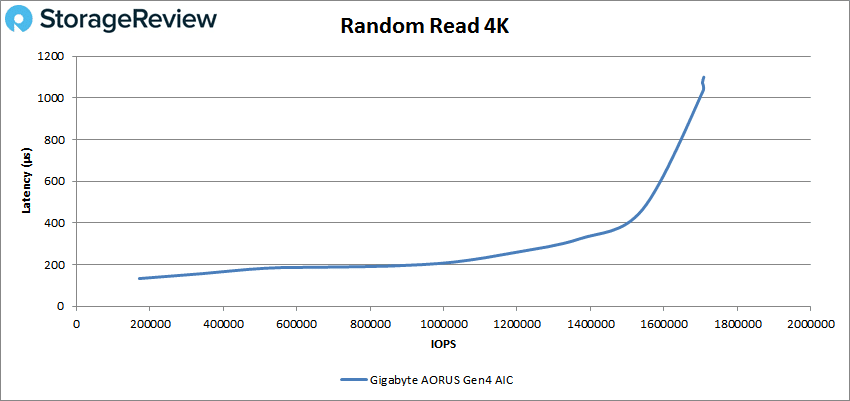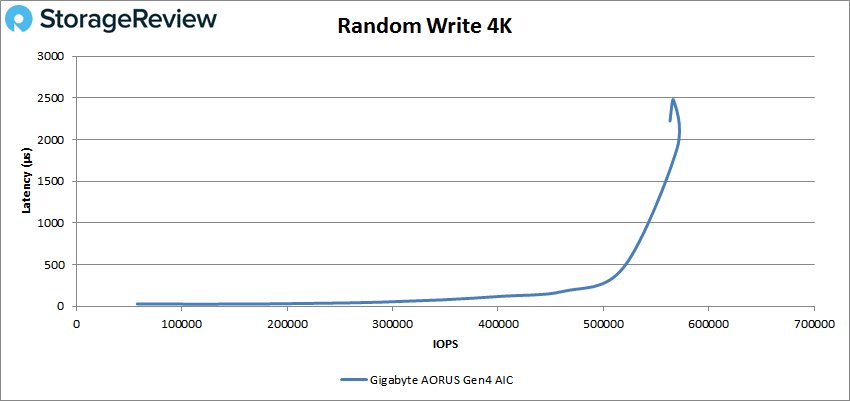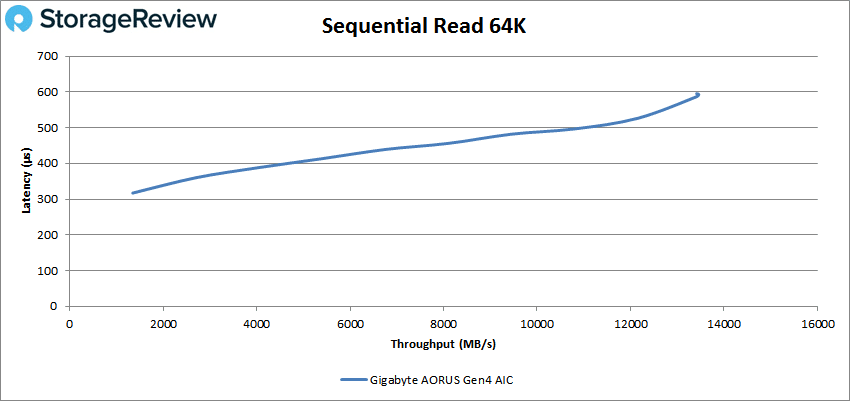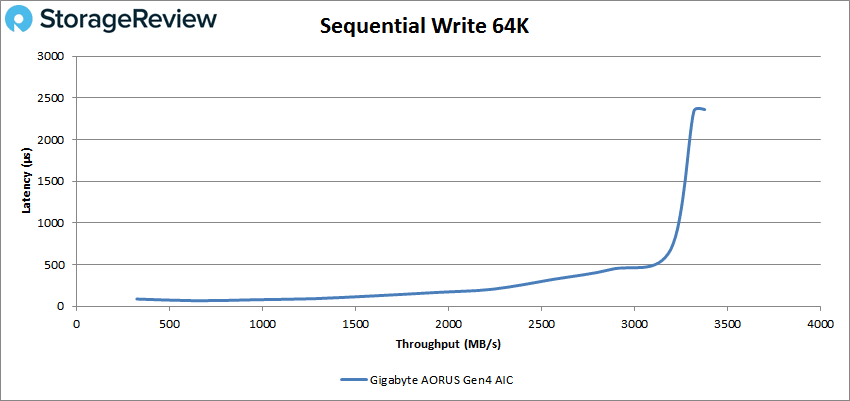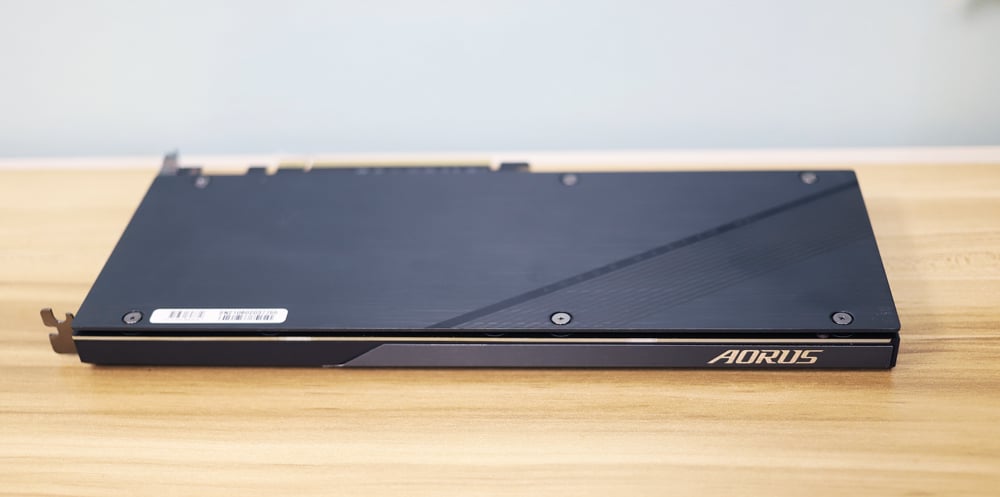The Gigabyte AORUS Gen4 AIC Adaptor is a well-built expansion card that allows users to add more NVMe M.2 drives to their system and is highlighted by its support for the PCIe Gen4. With access to 16 lanes and when populated with four SSDs, Gigabyte states that read and write throughput can reach up to an impressive 15GB/s. To achieve these numbers, however, you’ll need a motherboard that supports PCIe Gen4, along with some nice NVMe SSDs.
The Gigabyte AORUS Gen4 AIC Adaptor is a well-built expansion card that allows users to add more NVMe M.2 drives to their system and is highlighted by its support for the PCIe Gen4. With access to 16 lanes and when populated with four SSDs, Gigabyte states that read and write throughput can reach up to an impressive 15GB/s. To achieve these numbers, however, you’ll need a motherboard that supports PCIe Gen4, along with some nice Gen4 NVMe SSDs.
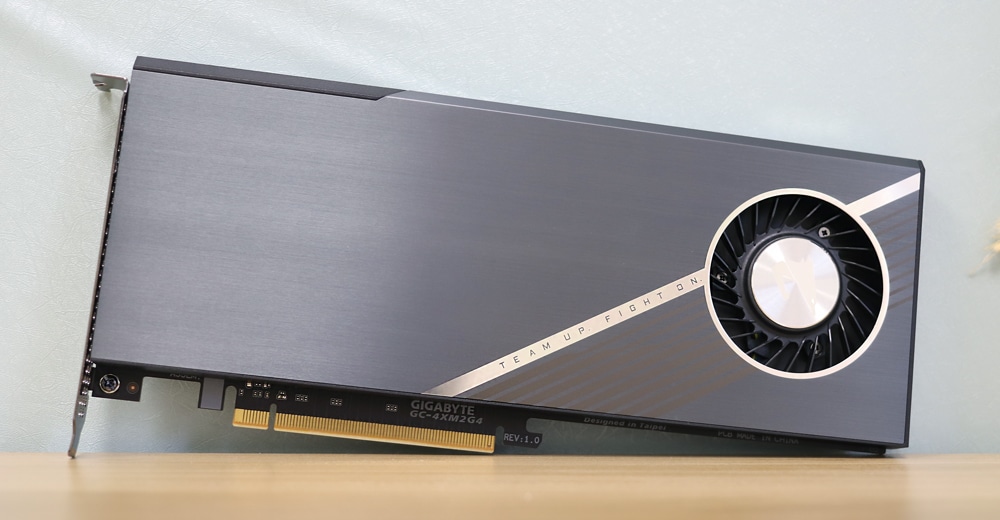
Gigabyte AORUS Gen4 Overview
Though it isn’t compatible with the Intel Z390/Z370 (as the chipset is limited to detecting a maximum of three M.2 SSDs), it is fully supported by Intel X299, AMD X570, and AMD TRX40. In addition, though the adaptor does support PCIe Gen3 SSDs, performance will certainly be less than that of a Gen4 drive and will vary depending on the brand of SSD. It’s also worth mentioning that it requires a complete PCIe x16 or x8 bandwidth slot to work. So, if you’re a gamer or professional that uses a high-end AMD or NVIDIA graphics card and no slots remain, you might need to look elsewhere. IT also requires your motherboard to support PCIe port bifurcation to split the one port into four in the BIOS.
The AORUS Storage Manager is the company’s dedicated software for the AORUS Gen4 AIC Adaptor and helps make things pretty easy for users. It allows you to do things like set RAID 0 on multiple M.2 SSDs with just a single click and displays the overall temperature on the SSDs and PCB so users can gauge which of the available three fan profiles they should use. You need a Gigabyte motherboard for the software to work though.
The Gigabyte card also supports M.2 2242, 2260, 2280, and 22110 form factors, so users will be able to populate it with pretty much any M.2 NVMe SSD.
Backed by a 3-year warranty, the Gigabyte AORUS Gen4 AIC Adaptor goes for roughly $380 at Amazon. The pricing on this and cards of this nature however have been increasing dramatically as part of the Chia blockchain craze.
Gigabyte AORUS Gen4 AIC Adaptor specifications
| Interface | PCI Express x16, compatible with PCI Express x16 and x8 slots |
| Available slots | 4 x PCIe 4.0/3.0 M.2 Slots |
| LEDs | 4 x M.2 activity LEDs |
| Storage Interface | 4 x M.2 connectors (Socket 3, M key, type 2242/2260/2280/22110 PCIe x4 SSD support) |
| Dimensions | 26.2cm x 11.5cm |
| Performance | Read and Write: up to 15,000MB/s |
Gigabyte AORUS Gen4 AIC Adaptor Design and Build
The AORUS Gen4 AIC Adaptor features a beautiful all-metal enclosure that certainly has some weight to it and features a slick-looking lined pattern that passes through the right side of the fan. Even though you’ll only see the card when you install or remove it from the system, it’s always nice to see companies go the extra step with their product.
Because the card will contain four powerful and potentially hot NVMe SSDs, it is in need of an advanced thermal solution and active cooling. As such, Gigabyte has included a 5.5mm pure copper heatsink, 5cm double ball-bearing fan, M.2 SSD baseplate, and multiple thermal pads to ensure that the high-performance SSDs run smoothly.
Users also have the choice between three different fan profiles based on their specific hardware configuration, which helps them reach their ideal balance of performance and noise.
Installing the drives on the card is just like adding them to your motherboard: simply push them into the M.2 slot and then gently tighten the standoff mount screw. It was a bit tricky installing the card into the PCIe slot due to its lengthy build, so it would probably be a bit more accessible to users with limited space in their systems if it were a bit shorter.
Gigabyte AORUS Gen4 AIC Adaptor Performance
The first part of our performance tests is to put the AORUS Gen4 AIC Adaptor through our Blackmagic test software and IOMeter. Both were done on our Lenovo P620, and we outfitted the card with 4x Sabrent Rocket NVMe 4.0 2TB SSDs.
For Blackmagic, we saw the adaptor hit 5,145MB/s read and 10,400MB/s write when using striped software RAID across the four SSDs managed by Windows.
For IOmeter we looked at each drive as a separate device, running the adaptor at four drives under four profiles: 1 queue per drive, 4 queues per drive, 32 queues per drive, and 256 queues per drive.
First up is our 1-queue test. In sequential 2MB performance, the AORUS Gen4 AIC Adaptor was able to post an aggregate speed of 14,082MB/s write and 13,289MB/s read while random 2MB showed 14,439MB/s write and 12,547MB/s read. Looking at random 4K aggregate performance, the AORUS card posted 188,316 IOPS write and 53,467 IOPS read.
In our 4-queue test, sequential 2MB performance showed an aggregate speed of 16,245MB/s write and 19,055MB/s read while random 2MB showed 16,233MB/s write and 18,825MB/s read. Looking at random 4K aggregate performance, the AORUS card posted 511,564 IOPS write and 210,556 IOPS read.
Moving on to 32 queue, sequential 2MB performance posted an aggregate speed of 16,255MB/s write and 19,140MB/s read while random 2MB showed 16,229MB/s write and 19,101MB/s read. Looking at random 4K aggregate performance, the AORUS card posted 618,529 IOPS write and 777,222 IOPS read.
Lastly, is 256 queue, sequential 2MB performance posted an aggregate speed of 16,262MB/s write and 19,157MB/s read while random 2MB showed 16,230MB/s write and 19,099MB/s read. Looking at random 4K aggregate performance, the AORUS card posted 621,450 IOPS write and 785,387 IOPS read.
VDBench Workload Analysis
For our VDBench workload, we used Ubuntu 20.10 Desktop as the OS, whereas the BlackMagic and IOMeter testing above was leveraging Windows 10.
When it comes to benchmarking storage devices, application testing is best, and synthetic testing comes in second place. While not a perfect representation of actual workloads, synthetic tests do help to baseline storage devices with a repeatability factor that makes it easy to do apples-to-apples comparison between competing solutions. These workloads offer a range of different testing profiles ranging from “four corners” tests, common database transfer size tests, to trace captures from different VDI environments.
All of these tests leverage the common vdBench workload generator, with a scripting engine to automate and capture results over a large compute testing cluster. This allows us to repeat the same workloads across a wide range of storage devices, including flash arrays and individual storage devices. Our testing process for these benchmarks fills the entire drive surface with data, then partitions a drive section equal to 5% of the drive capacity to simulate how the drive might respond to application workloads. This is different than full entropy tests which use 100% of the drive and take them into a steady state. As a result, these figures will reflect higher-sustained write speeds.
Profiles:
- 4K Random Read: 100% Read, 128 threads, 0-120% iorate
- 4K Random Write: 100% Write, 64 threads, 0-120% iorate
- 64K Sequential Read: 100% Read, 16 threads, 0-120% iorate
- 64K Sequential Write: 100% Write, 8 threads, 0-120% iorate
In 4K random read, the AORUS Gen4 AIC Adaptor (populated with Sabrent Rocket 4 SSDs) peaked at 1,708,718 IOPS with a latency of 1.1mss.
For 4K random write, AORUS Adaptor peaked showed a peak of 566,534 IOPS at a latency of 2.47ms before dropping off slightly at the end.
Switching over to sequential workloads, we looked at 64K read. Here, the AORUS Adaptor showed a peak of 215,341 IOPS (or 13.5GB/s) at a latency of 593.2µs.
For writes, the AORUS Adaptor peaked at 54,007 IOPS or 3.38GB/s at a latency of 2.4ms.
Conclusion
The Gigabyte AORUS Gen4 AIC Adaptor expansion card is a great way to add more high-performance storage to systems for those who have the available internal real estate and newer-generation motherboards. Gigabyte’s AIC adaptor is also highlighted by its support for the new PCIe Gen4 interface (though it’s also compatible with Gen3 drives), speed, and modern design.
As far as performance goes, results were very speedy when we installed four Sabrent Rocket NVMe Gen4 SSDs on the adaptor inside a Lenovo ThinkStation P620. In our Blackmagic test using a striped volume across all four SSDs, the adaptor hit 5,142MB/s read and 10,400MB/s write.
Looking at IOmeter, the Gigabyte AORUS Gen4 AIC Adaptor was able to reach aggregate speeds of 14,082MB/s write and 13,289MB/s (2MB sequential) and 14,439MB/s write and 12,547MB/s read (2MB random) for 1 queue. Looking at 4 queue, it hit 16,245MB/s write and 19,055MB/s read (2MB sequential) and 16,233MB/s write and 18,825MB/s read (2MB random). Moving on to 32 queue, the adaptor showed aggregate speeds of 16,255MB/s write and 19,140MB/s (2MB sequential) and 16,229MB/s write and 19,101MB/s read (2MB random), while 256 queue posted 16,262MB/s write and 19,157MB/s read (2MB sequential) and 16,230MB/s write and 19,099MB/s read (2MB random).
We also looked at peak VDBench scores, where the Gigabyte AORUS Gen4 AIC Adaptor recorded aggregate performance of 1,708,718 IOPS in 4K read, 566,534 IOPS in 4K write, 13.5GB/s in 64K read, and 3.38GB/s in 64K write. With the above performance results in mind, it should be noted that the Sabrent Rocket SSDs aren’t the fastest drives out there, so the Gigabyte card probably has more to give.
Overall, we were impressed with this expansion card, though with a few minor caveats. The AORUS Gen4 AIC Adaptor is very large and requires access to 16 lanes to reach its potential read and write throughput, so it might not be an option for gamers or design professionals who already use all of their available PCIe x16 slots for their high-end GPU(s).
Also, because this would be a popular way to increase NVMe density in Chia plotting rigs, the price doubled recently. Nonetheless, the AORUS Gen4 AIC Adaptor ticks all the right boxes: it is built really well, comes bundled with easy-to-use management software, supports the Gen4 interface, and works right out of the box (unlike other cards we’ve looked at in the past).
Gigabyte AORUS Gen4 AIC on Amazon
Engage with StorageReview
Newsletter | YouTube | LinkedIn | Instagram | Twitter | Facebook | TikTok | RSS Feed

